Danubia Meteor 31 Handleiding
Bekijk gratis de handleiding van Danubia Meteor 31 (15 pagina’s), behorend tot de categorie Telescoop. Deze gids werd als nuttig beoordeeld door 64 mensen en kreeg gemiddeld 4.4 sterren uit 32.5 reviews. Heb je een vraag over Danubia Meteor 31 of wil je andere gebruikers van dit product iets vragen? Stel een vraag
Pagina 1/15

METEOR 31
WARNUNG!
Schauen Sie mit diesem Teleskop niemals direkt in die Sonne oder
in die Nähe der Sonne. Es besteht Erblindungsgefahr!
WARNING!
Never look through this telescope at or near the sun.
You may blind yourself!
MUY IMPORTANTE!
No intente nunca mirar directamente al sol a través de este teles-
copio. Se podría quedar ciego!
AVERTISSEMENT !
Ne regardez jamais par ce télescope au soleil.
Vous pouvez vous aveugler !

- 3 - - 29 -
D
Teleskop Tubus Ausziehbare Stativbeine
Objektiv Frontdeckel drei Feststellschrauben für Stativbeine
Sucherfernrohr Befestigungsbügel für Ablageschale
Halterung für Sucherfernrohr Ablageschale
Schrauben für Sucherfernrohr Schrauben für 21) + 20) mit U-Scheiben
Okular Flügelmuttern für 22)
Barlowlinse
Okularaufnahme
Feststellschraube für Höhen-Feineinstellung
Höhenfeineinstellung
Fokussierhandrad
Azimuth-Montierung
Regulierschraube für Höhen-Feineinstellung
zwei Flügelschrauben für die Verbindung von Teleskop und Montierung
Sockel der Montierung mit Stativanschlüssen
Feststellschraube für Horizontalbewegung
drei Schrauben für Stativbefestigung mit U-Scheiben
Flügelmutter für 16)
Meteor 31 - Astro-Spiegelteleskop
Brennweite: 700 mm
Spiegel-ø (Öffnung): 75 mm (3”)
Lichtstärke: 1:9,2
Tubuslänge: ca. 700 mm
Gesamtgewicht: ca. 3,2 kg
Mit AZ-1 Azimuthmontierung
Alustativ
Sucherfernrohr 5x24
2 Okulare (11/4”): F6 = 116x (232x)
H20 = 35x (70x)
Mit Barlowlinse 2x zur Verdopplung der
Okularvergrößerung (s. oben)
Mit Einschraub-Mondfilter
MONTAGEANLEITUNG
Das METEOR 31 wird in einem Karton geliefert. Die einzelnen Bauteile sind in verschiedenen Innenkartons
untergebracht. Die Stativbeine befinden sich, einzeln verpackt, unter diesen Kartons.
18
19
- 4 -
20
21
22
23
1
2
3
4
5
6
6a
8
9
10
11
12
13
14
15
16
17
7

- 12 -
GB
BARLOW LENS
The 2x barlow lens expands the original magnification of your eyepieces (6) by the factor 2. insert it,To
follow the instructions of the erecting eyepiece. Observe and adjust as usual.
RECOMMENDATION
We recommend starting your observations always with small magnification. This guarantees you a wi-
der field of view and you can recognize and focus your objects faster. The larger the magnification, the
field of view decreases and you risk blurred images. The celestial objects will move faster out of the
range of your telescope and you have to track more often.
MOON FILTER
Your telescope accessories include a moon filter. It provides observations of the full or light moon in rich
contrasts. The moon filter is screwed into the eyepiece, when required.
Caution: Do not use this filter as a sun filter!
ADJUSTING THE FINDERSCOPE
For daylight observation we recommend to use your telescope in combination with the eyepiece H 20
(35x) only. Direct the telescope to a far-distanced object and adjust a particular part of your object
(church tower, top of a tree of crane, TV antenna) in the center of your field of view. Now look through
your finderscope which provides a reverse and up-side-down image. Open the 3 screws of the support
(4) slightly and direct the reticle of your finderscope towards the center of your object. ighten the T 3
screws with care, making sure that the reticle stays in the center of the image. Your finderscope is ad-
justed now. It has a far larger field of view then your telescope and helps you to direct your telescope
towards your desired objects which you can observe then through your telescope with smaller field of
view. Caution: Do not aim the sun with the finderscope. You eyes can be seriously damaged.
FURTHER HINTS FOR ASTRO OBSERVATIONS
Observe outdoors only, but not through a window. Train the hand movements a few times at daylight.
In case of temperature differences between inside and outside, the telescope must get used to the pre-
dominant temperature in order to avoid fogging. Adopt yourself and your eyes to the darkness in advan-
ce. To clean the optical surfaces make sure to use appropriate fuzz-free optical tissues. Remove the dust
with air pressure or a blow bellow. Avoid strong rubbing. recommend studying specializing literatureWe
on astronomy and celestial observations. Enjoy your observations with your DÖRR-Danubia Telescope!
- 21 -
F
LENTILLE DE REDRESSEMENT POUR LES OBSERVATIONS TERRESTRES
Utiliser la lentille de redressement 1,5x (erecting lens) optionelle afin de corriger I´image lors d´observations
terrestres - Diamètre ext. 11/ 14” Diamètre int. 1/ à4” L´embout est fiché sur le porte oculaire (7) et serré
I´aide des deux vis périmètriques. Fixer I´oculaire H20 dans I´embout et le serrer à I´aide des deux vis
extérieures de celui-ci, dans cette configuration, grossissement sera de 5x1,5 = 53x. Les observations3
et les mises au point sont identiques à celles décrites plus haut.! Achtung - Peilen Sie auf keinen Fallnbeobachtungen
LENTILLE DE BARLOW
La lentille de Barlow 2,0x (barlow-lens) permet d’augmenter le grossissement initial de l’oculaire (6)
d’un facteur de 2. Cette entille, out comme lentille de redressement, se fixe entre le porte oculairel t la
et l’oculaire. Les mises au point sont identiques à celles décrite plus haut.
RECOMMANDATION
Commencer toujours une observation avec le grossissement le plus faible, votre champ de vision est
élargi et vous permet d’acquérir plus rapidement l’objet à observer souhaité et sa mise au point. Des
grossissements plus forts augmentent le risque de flottement; les objets célestes se déplacent dès lors
plus rapidement et un réajustement de votre mise au point est plus souvent nécessaire.
FILTRE LUNAIRE
Un filtre lunaire est fourni avec les accessoires (Moon). Ce filtre permet l’observation de notre satellite
en période de pleine lune. Ce filtre est vissé sur l’arrière de l’oculaire.
Attention : ne jamais utiliser ce filtre lunaire à la place d’un filtre solaire.
JUSTIFICATION DU CHERCHEUR
De jour n´utiliser la lunette qu´avec I´oculaire H20 (35x). Pointer la lunette vers un objet lontain et cen-
trer votre champ de vision sur un point caractéristique, (clocher, cime d´un arbre, sommet d´une grue,
antenne de télévision). En regardant par le chercheur, vous verrez une image renversée et inversée, des-
serrer légèrement les trois vis du pourtour du support (4) du chercheur et justifier le réticule sur le point
central de I´image pointée à I´aide votre lunette. Resserrer uniformément et avec précaution les 3 vis du
pourtour du support en veillant à garder le réticule calé sur le centre de I´image. Vous avec dès lors jus-
tifié votre chercheur, et serez en mesure de repérer un objet d´observation dans un champ d´acquisition
plus vaste, et ainsi, I´observer à I´aide de votre lunette avec un grossissement plus puissant.
ATTENTION - Ne viser en aucun cas le Soleil, I´observation solaire sans précaution est dommageable
pour vos yeux.
Product specificaties
| Merk: | Danubia |
| Categorie: | Telescoop |
| Model: | Meteor 31 |
Heb je hulp nodig?
Als je hulp nodig hebt met Danubia Meteor 31 stel dan hieronder een vraag en andere gebruikers zullen je antwoorden
Handleiding Telescoop Danubia

1 Juli 2023

27 Juni 2023
Handleiding Telescoop
- Unold
- DayStar Filters
- Celestron
- Bresser
- Dorr
- ZWO
- Zhumell
- Auriol
- IOptron
- Vivitar
- Explore Scientific
- Konig
- Marquant
- Vaonis
- Meade
Nieuwste handleidingen voor Telescoop
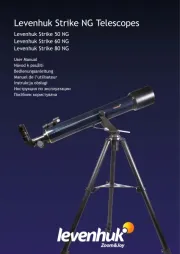
5 Augustus 2025
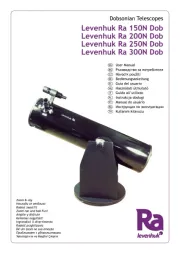
29 Juli 2025
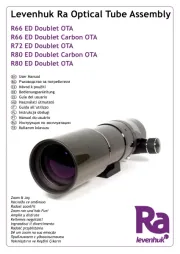
28 Juli 2025
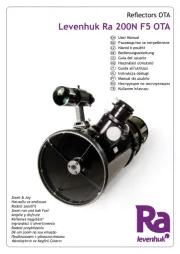
22 Juli 2025
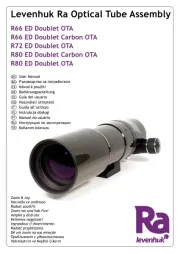
21 Juli 2025
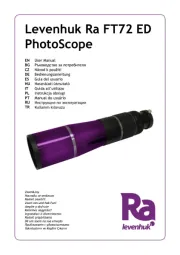
21 Juli 2025
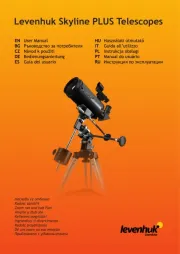
21 Juli 2025
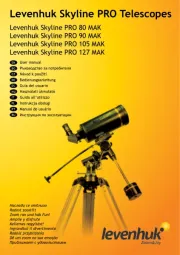
21 Juli 2025
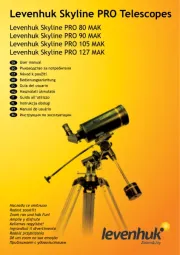
21 Juli 2025
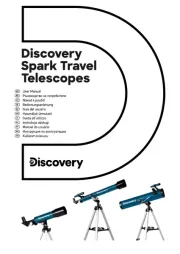
15 Juli 2025